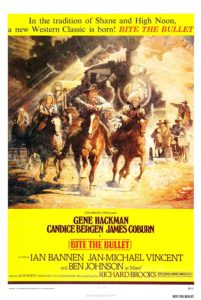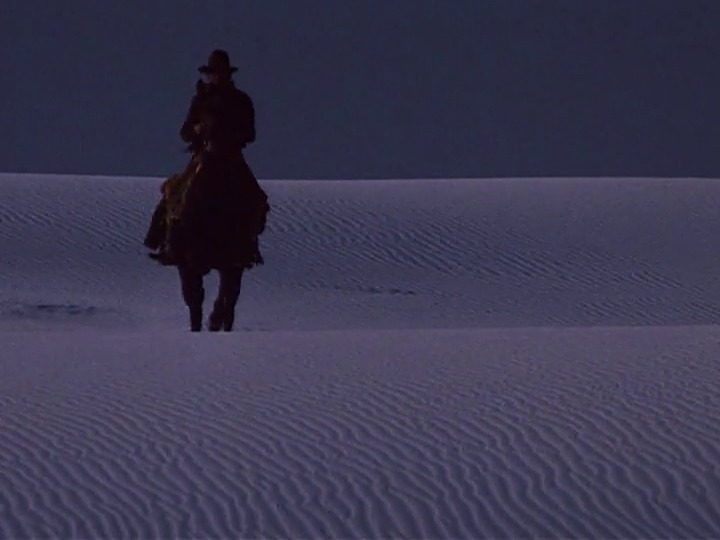“Racin’ for money ain’t sport — it’s war!”
|

Synopsis:
At the turn of the 20th century, a motley assortment of contestants — including include two former Rough Riders (Gene Hackman and James Coburn), a spunky prostitute (Candice Bergen), a hot-headed kid (Jan-Michael Vincent), an ailing cowboy (Ben Johnson), a sporting Englishman (Ian Bannen), and a Mexican with a toothache (Mario Arteaga) — compete against and/or support one another in winning a 700-mile cross-country horse race over rough terrain.
|
|
Genres, Themes, Actors, and Directors:
- Ben Johnson Films
- Candice Bergen Films
- Gene Hackman Films
- James Coburn Films
- Richard Brooks Films
- Westerns
Review:
Richard Brooks directed this big-budget, all-star western inspired by a grueling real-life race concocted by the Denver Post to generate publicity. The cinematography and location filming are stellar, bringing this rugged era to vivid life, and the thematic presence of friendship and loyalty throughout is notable: we quickly learn how many of these contestants (more than we might imagine) are willing to forgo winning to help a fellow rider in trouble or distress. Unfortunately, the script is a bit over-long and rambling, and fails to develop sincerely interesting female characters (Bergen does fine with what she’s given, but it isn’t much). This one is worth a look if you’re curious, but only must-see for western fans.
Redeeming Qualities and Moments:
- Harry Stradling, Jr.’s cinematography

- Fine location shooting

Must See?
No, though it’s worth a one-time look.
Links:
|
One thought on “Bite the Bullet (1975)”
First viewing. Not must-see.
Writer / director Brooks tackles the worthy theme of American competitiveness (as Hackman says early on, “If you’re not the best – and the first and the greatest – and if you don’t win – then you’re not American.”) but unfortunately the script hangs on an idea rather than a compelling narrative. It gets points for its detailed production design and its sense of atmosphere (as well as an attentive cast) but, for all its ruggedness and bravado, it largely remains inert and uninvolving.
~ that is, until the last 20 minutes – at which point some welcome dramatic tension emerges… which points up that what precedes is wanting.
Brooks makes sure to visually accent the arduous nature of the race – but, as a result, the film is also about 15 minutes longer than it needs to be to bring about the same effect. Its decisive conclusion is milked (including slow-mo) beyond necessity.